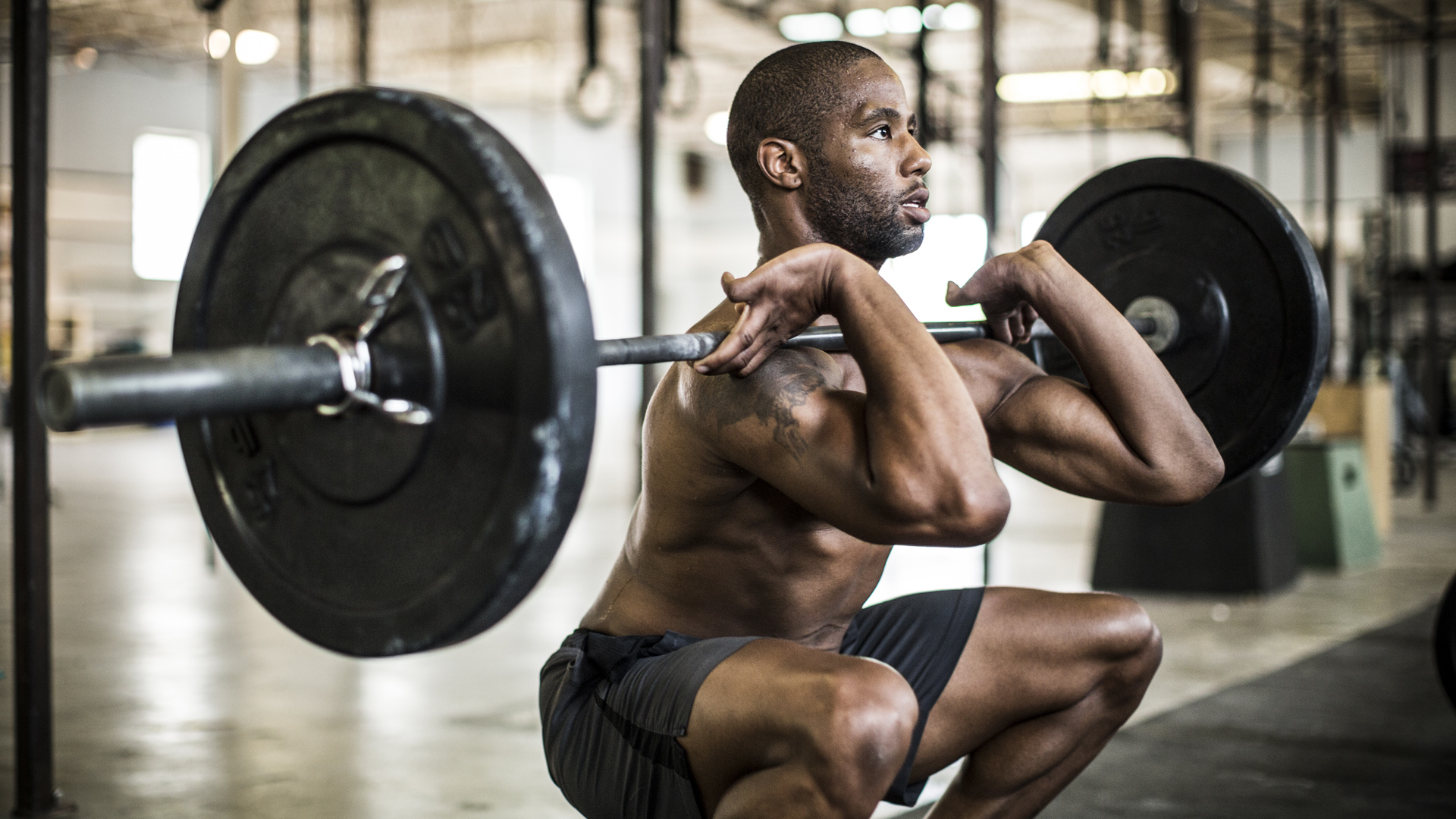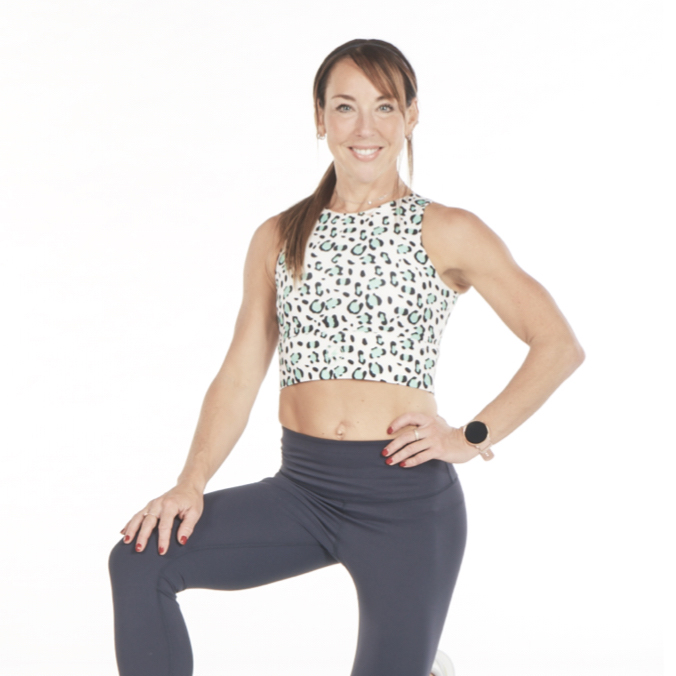

The power clean is the ultimate workout move, combining strength, speed, and a dash of athletic grace—which alone should be enough of an incentive to learn how to do it.
This Olympic lift isn't just for elite athletes or the CrossFit crowd, though; it's a fantastic way to boost your overall fitness, improve your explosiveness, and impress your gym buddies with your newfound prowess.
In this how-to guide, we'll break down the power clean step-by-step so you can master this powerhouse exercise and elevate your training game. Grab your barbell, and let's get lifting!
The Power Clean
When it comes to Olympic lifts to consider, there are actually only two: the Snatch and the Clean and Jerk. Both involve lifting a heavy barbell from the floor to overhead.
The Power Clean is, in fact, a foundational exercise for Clean and Jerk and a compound exercise that works the full body, especially the glutes, core, quads, hamstrings, adductors, shoulders, and forearms. But how and why should you do it?
“A Power Clean is a full-body movement where the bar is lifted fast and explosively from the floor to a racked position on the front of the shoulders, ” says Jack Claxton, Level 3 Personal Trainer and Personal Training Ambassador at David Lloyd.
He says the move will not only help develop power by recruiting the fast-twitch muscle fibers needed to help you run faster, jump higher, and lift more weight (see reference here), but it will also improve coordination and burn a ton of energy because it has a strong cardio effect. It will get the heart pumping while building muscle.
Sign up to the T3 newsletter for smarter living straight to your inbox
Get all the latest news, reviews, deals and buying guides on gorgeous tech, home and active products from the T3 experts
The Power Clean and Functional Fitness
Being able to lift a load from the ground to your shoulders in one powerful movement - AKA the power clean is also very useful for every day life; think jobs around the house, carrying young kids - and even heaving around heavy bags.
By regularly performing this exercise, you’ll not only improve your functional strength and fitness for everyday life but also your whole-body coordination, motor control and posture. “This is because the move works into the posterior chain of muscles that sit at the back of the body; think calves, hamstrings, glutes and back,” adds Claxton.
How to do Power Cleans
We think you’ll agree that the Power Clean is a good all-round egg that’s challenging, yet fun to learn and fun to perform. Here’s how to do it"
- Stand over the barbell, with your feet hip-width apart
- Squat down and grip the bar just outside your feet so your shoulders are over the bar and your torso is upright and core tight.
- Drive the barbell up with your legs (similar to a deadlift), keeping the bar as close to your body as possible.
- Once the bar passes your knees, explosively extend your hips and use your momentum to carry the bar up.
- As soon as your hips are fully extended, quickly drive your body under and catch the barbell in the front rack position, with your elbows as high as possible and in a partial quarter squat.
- To finish, slowly lower the barbell to your hips before lowering it to the ground.
Power Clean basics
The Power Clean is highly technical, which can feel pretty intimidating at first. Here are a few tips to help you along the way.
Before performing a Power Clean, always warm up. The exercise involves explosive movements that require adequate muscle activation and flexibility. To help prepare your body for the move, perform dynamic stretches and mobility exercises targeting the hips, knees, ankles, shoulders, and wrists.
Start with light weights and focus on perfecting your technique. Gradually increase the weight as you become more comfortable with the move and are 100 per cent certain you can maintain proper form.
It’s important to incorporate assistance exercises to help improve your power clean. Assistance exercises that target the specific muscles and movement patterns involved in the lift include front squats, which will work on your wrist flexibility, quads, and hip flexors; deadlifts, which will help build up your hamstrings and lower back, as well as hang cleans; and high pulls, which will help build grip strength and improve shoulder strength and mobility.
Keep the bar close. To do this, imagine shaving your shins, thighs, and torso with the barbell as you lift it up from the floor. Letting the bar get too far away from your body will cause you to lose momentum, which will have a huge impact on the efficiency of the movement. It will also put too much strain on the back and shoulders.
Once you’ve cracked the move, start by doing three sets of three reps, says Claxton.
“The power clean is an athletic and explosive movement which takes a lot of focus to execute. You certainly don’t want to do them in a fatigued state and cause an injury, which is why you’ll need to keep the reps low and power output high. The trick, as always, is to find the balance between pushing to get stronger whilst keeping your form on point.”

Lucy Miller is a journalist, Level 3 Personal Trainer, Nutritional Advisor and Children’s Fitness Specialist. She holds fitness qualifications from NASM Training and Premier Training International and has been a fitness journalist and fitness (and cover) model for over 20 years. Since going freelance in 2014, Lucy left Men’s Fitness Magazine to write for an abundance of top consumer titles such as Women’s Health, Women’s Fitness, Waitrose, The Times, The Guardian and Runners World.
She’s also extremely passionate when it comes to educating others about health and physical activity and loves inspiring and working with children and adults to help make fitness fun, sustainable and accessible. In her spare time, Lucy is ever the sportswoman. Once a national gymnast, having won three national titles, she has also run a handful of marathons around the world and loves to test her physical and mental side with daily running and gym sessions, not to mention ballet, bootcamp, boxing and TRX.